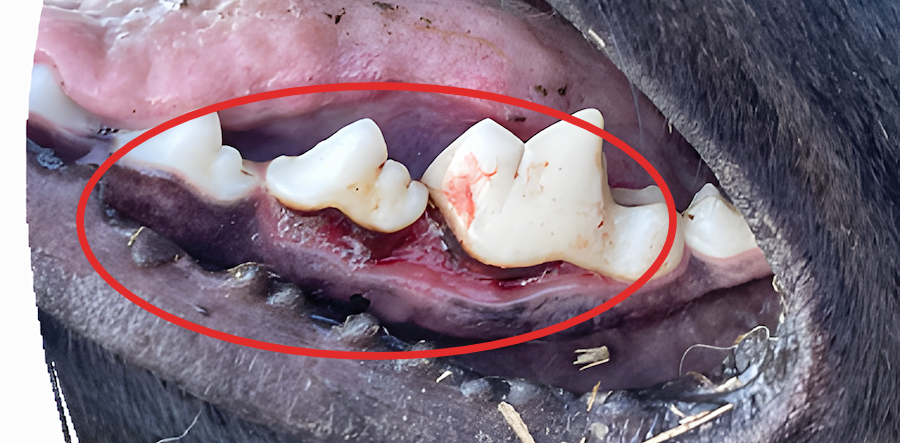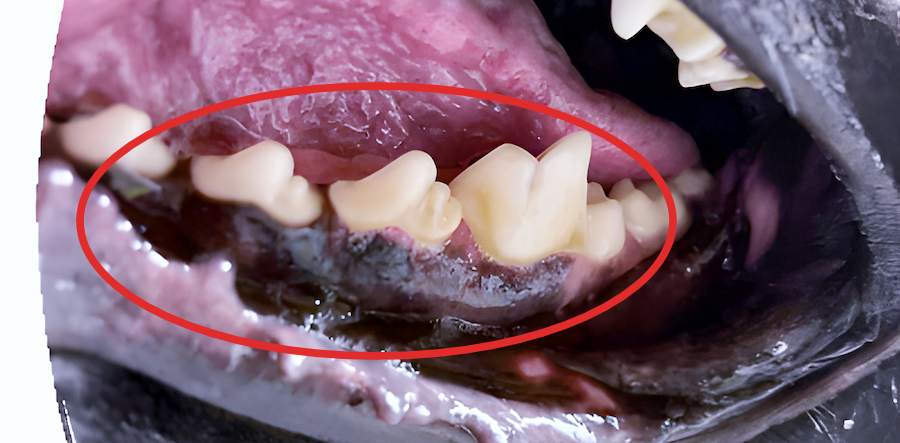Periodontal Disease is a Problem
70% OF CATS AND 80% OF DOGS HAVE PERIODONTAL DISEASE BY AGE 3. Routine plaque management plays an important role in maintaining oral cleanliness and supporting gum health.
Oral diseases such as periodontal disease, gingivitis, and cavities occur when plaque forms a persistent layer on teeth and gums that can lead to buildup and odor if not routinely managed.
Other companion animal oral care products require daily application, may offer only temporary relief with short duration of effectiveness, and may be disruptive to the animal’s digestive tract. With many other oral care products, plaque can start to re-form within minutes, and the duration of effectiveness may be only a few hours to a day.
GingiGuard: A New Standard in Plaque Management
GingiGuard™ Gel offers a new level of convenience, duration, and effectiveness in oral care management:
No Daily Brushing
Applied monthly directly to teeth/gum line
Supports Cleaner Teeth and Fresher Breath
Adheres to teeth and gums
Safe
Non-toxic, non-irritating
Our breakthrough product, GingiGuard Gel, is a topical oral gel designed for monthly at-home use in the management of canine oral health. GingiGuard Gel may be used in conjunction with a professional dental cleaning.
GingiGuard Gel. GingiGuard Gel provides an advanced, surface-acting approach that loosens and lifts plaque buildup to help maintain oral cleanliness and freshness.
Unlike other products that require daily effort, GingiGuard Gel is designed for convenient, once-a-month application. Simply apply along your dog’s gum line to help maintain oral health and freshness all month long.
GingiGuard Gel Instructions
- Dispense a pea-sized amount of GingiGuard Gel onto your finger.
- Gently apply along the outer gums (buccal side) on both sides of the dog’s mouth (evenly
distributed). A soft toothbrush may also be used if preferred. - Avoid excessive pressure or inserting tools deep into the mouth.
- Wash hands after administration.
- Avoid any food or drink for 20 minutes after application.
Formula Details
GingiGuard Gel is science-backed, veterinarian developed, safe (no antibiotics, no harsh
chemicals), gentle, and effective.
- Active ingredient: TKS-203 (proprietary, surface-protective technology).
- Inactive ingredients: Glycerin, HPMC, TES, poloxamer 407, zinc gluconate. Formulated in deionized water.
- GingiGuard’s patented formula is produced in USA.
- GingiGuard Gel is for veterinary use only.
Clinical
A veterinary field observation of 142 client-owned dogs of various breeds and sizes was conducted following professional dental cleaning and a single application of GingiGuard Gel. Over several months, veterinarians noted that the gel maintained visible adherence and contributed to ongoing oral cleanliness.


